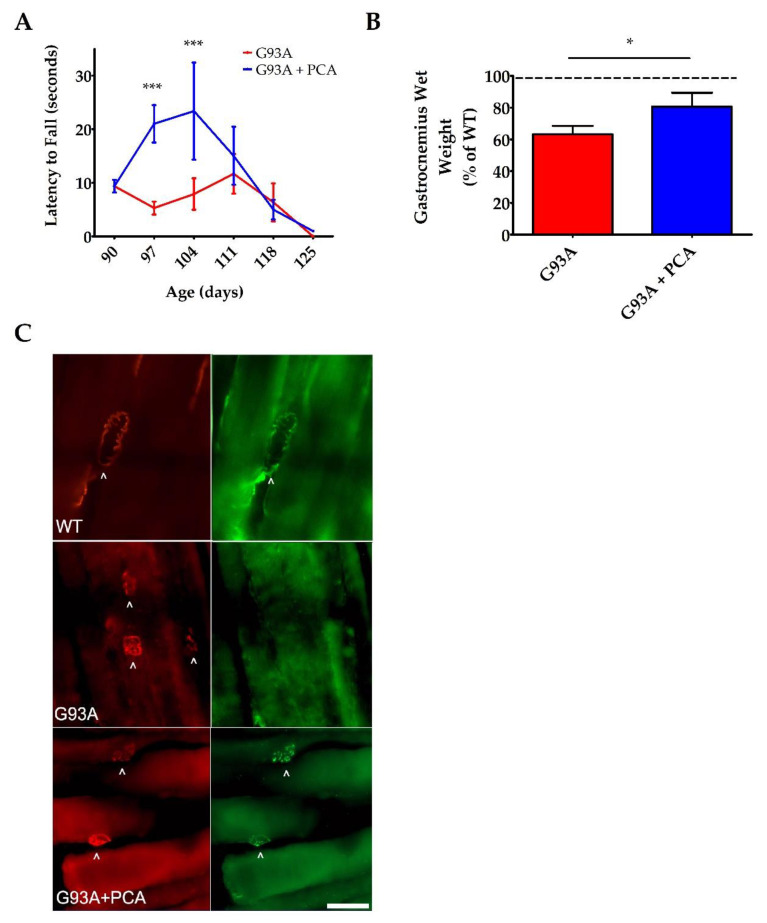Figure 3.
PCA treatment improves motor function as assessed by rotarod and also preserves gastrocnemius muscle weight and neuromuscular junction (NMJ) innervation at 105 days of age in the hSOD1G93A mouse model of ALS. (A) Rotarod testing of hSOD1G93A mice (untreated or treated with 100 mg/kg PCA beginning at disease onset). Rotarod testing was performed beginning at 90 days of age and extending through end stage and is expressed as latency to fall. Rotarod data are represented as the mean ± SEM for each time point; n = 10 mice per group. *** indicates p < 0.001 in comparison to untreated hSOD1G93A littermate controls. All data were analyzed using an unpaired t-test at each time point. (B) Quantification of gastrocnemius muscle weights. Data are expressed as a percent of the wildtype (WT) littermate mouse muscle weight and are shown as the mean ± SEM; n = 7 mice per group. * indicates p < 0.05 compared to untreated hSOD1G93A control mice (paired t-test). Mean gastrocnemius wet weight for the untreated hSOD1G93A mouse (0.0912 ± 0.0070) is significantly decreased when compared to the WT littermate control mouse (0.1433 ± 0.0055) (p = 0.0002; n = 7 mice per group). (C) Representative images of gastrocnemius muscle from wildtype control mice (WT), untreated hSOD1G93A mice (G93A), and hSOD1G93A mice treated orally with 100 mg/kg PCA beginning at disease onset (G93A+PCA). Mice were euthanized at 105 days of age and gastrocnemius muscles were stained with alpha-BTx (red) and VAChT (green) to label NMJs and innervation of NMJs, respectively. Scale bar = 20 μm. Arrowheads point to NMJs stained positively with alpha-BTx and VAChT.

